Emily Lakdawalla • Jan 24, 2018
New Horizons prepares for encounter with 2014 MU69
Somewhere in the dense star field in front of the New Horizons spacecraft, an invisible object is hiding. Throughout 2018, New Horizons will arrow toward 2014 MU69, whiffing past at 05:33 on January 1, 2019 (UTC). The small team of scientists and engineers working on New Horizons' Kuiper-belt extended mission has already laid out its plans for the encounter. Fine details will change as the team updates and improves its knowledge of the size, shape, and location of 2014 MU69 and any satellites, but the outline of the encounter has been fixed.
The team's most recent meeting took place last week, timed for the 12th anniversary of the spacecraft's launch. Mission management and engineers checked in on spacecraft status, and scientists summarized what they currently know about New Horizons' flyby target and how they plan to study it this year. Following are some of the highlights from the meeting and an overview of the future of the mission. Get yourself a beverage and settle in; this is a long update with lots of news. This post is not one of my "what to expect" articles with a detailed timeline of observation plans and Earth communication dates and simulated images of what we might see on what day. It's not quite time for that yet. I hope to be able to write and post that article in June.
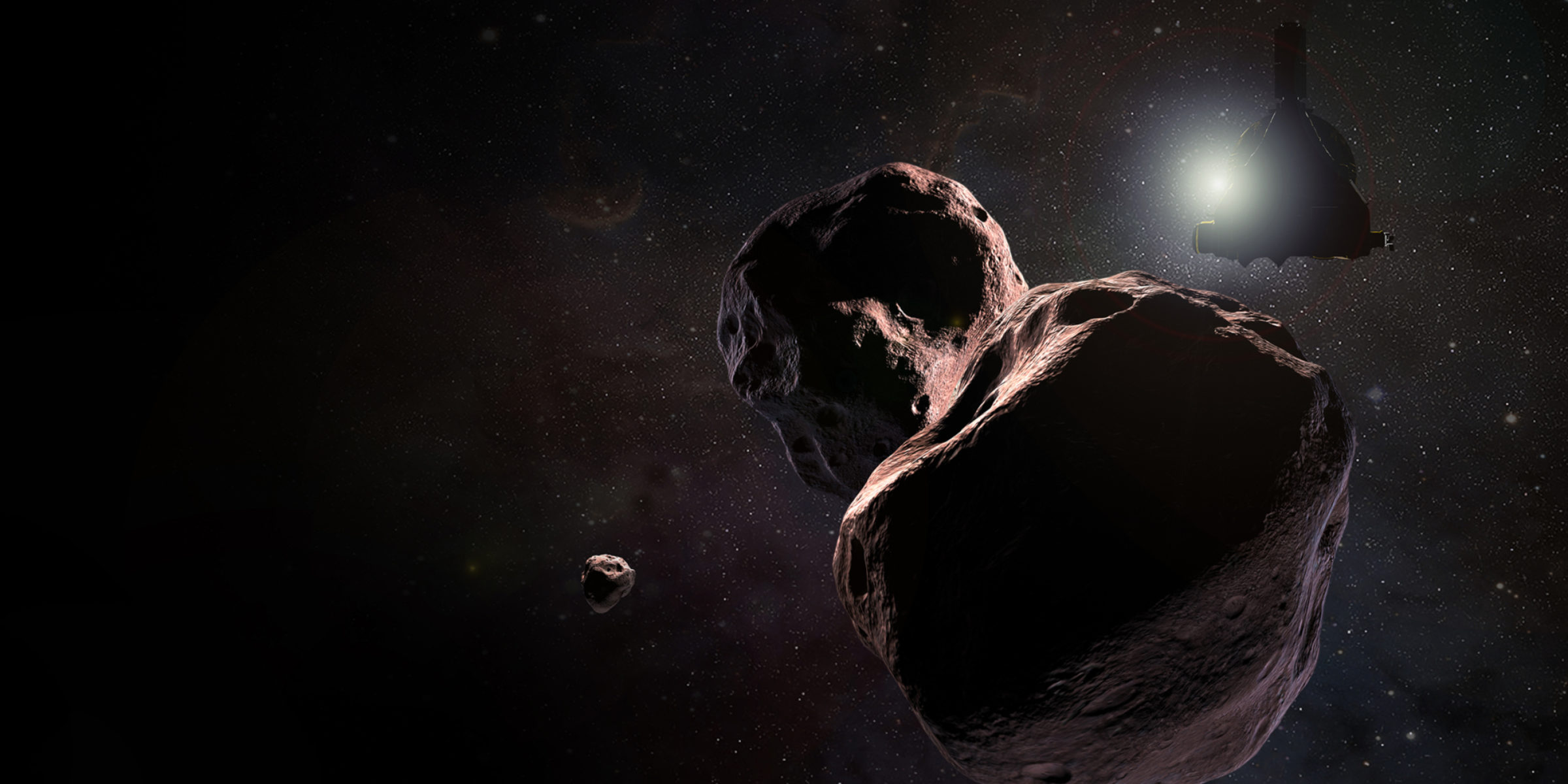
Current spacecraft status and distant Kuiper belt science
The spacecraft is currently hibernating, cruising quietly through the heart of the Kuiper belt. Everything on the spacecraft is healthy. Between Pluto and 2014 MU69, New Horizons has spent most of its time hibernating. Occasionally, it wakes to perform distant observations of other objects in the Kuiper belt and to relay data back to Earth. Even while hibernating, some of its instruments operate to gather data on magnetic fields and interplanetary dust and plasma. It cracks a sleepy eyelid once a week to send a beacon signal to Earth, letting Earth controllers know that it's fine. (It would also let Earth controllers if it wasn't fine, but that hasn't happened lately.) Hibernation keeps operating costs low for the long-lived mission.
Many of the objects that New Horizons has been observing during its waking periods were discovered as part of the search for possible flyby targets, so they're faint, small worlds that are also quite close to New Horizons' trajectory. A couple of them are sufficiently close that LORRI may actually be able to resolve them as objects barely larger than one pixel across during the day or two after the MU69 flyby! Astronomer Simon Porter was particularly pleased with the LORRI views of 2012 HE85, which have strong enough signal to show lightcurve variations. It was the first lightcurve New Horizons has obtained on a Kuiper belt object outside the Pluto system, but won't be the last. Because they obtained Earth-based observations of HE85 at nearly the same time as the higher-phase LORRI views, they should be able to produce a shape model of HE85 from its brightness variations, which would be a first for an object in the Kuiper belt. In other Kuiper belt observation news, Porter mentioned that New Horizons' observations produced significant improvement in the precision of the orbit determinations for large Kuiper belt objects Quaoar and 2002 MS4.
The spacecraft last fired its rockets on December 9. The trajectory correction maneuver was small: only 152 seconds, changing the velocity by 151 centimeters per second. The primary goal was to shift the timing of the MU69 flyby slightly earlier, to enable better coverage of the encounter from large radio dishes. (Specifically, it was to improve the radio-dish coverage of a "bistatic" experiment with the REX radio science instrument, in which the huge dishes will broadcast a signal at 2014 MU69 and REX will attempt to observe the reflected signal.) The next maneuver will be on October 3. Of the 75 kilograms of propellant that they launched with, 21 kilograms remain. Another 12 or so will be spent completing the extended mission, leaving about 9 for a possible second mission extension.
One of the coolest pieces of news (at least, news to me) from the team meeting is a new capability for LORRI, the highest-resolution camera on the spacecraft. Since launch and throughout the Pluto encounter, LORRI's longest-possible exposure time was 10 seconds. That's all they needed to spot Pluto's moons and search for rings in plenty of time to prepare for the Pluto flyby. But observations of the much more distant, darker, and smaller object(s) of 2014 MU69 would really benefit from longer exposures. So after Pluto, the team worked to increase the longest exposure time for LORRI. (There's a nice historical parallel here to the work the Voyager team did on that spacecraft's stability to help increase exposure times between the Saturn and Uranus flybys.)
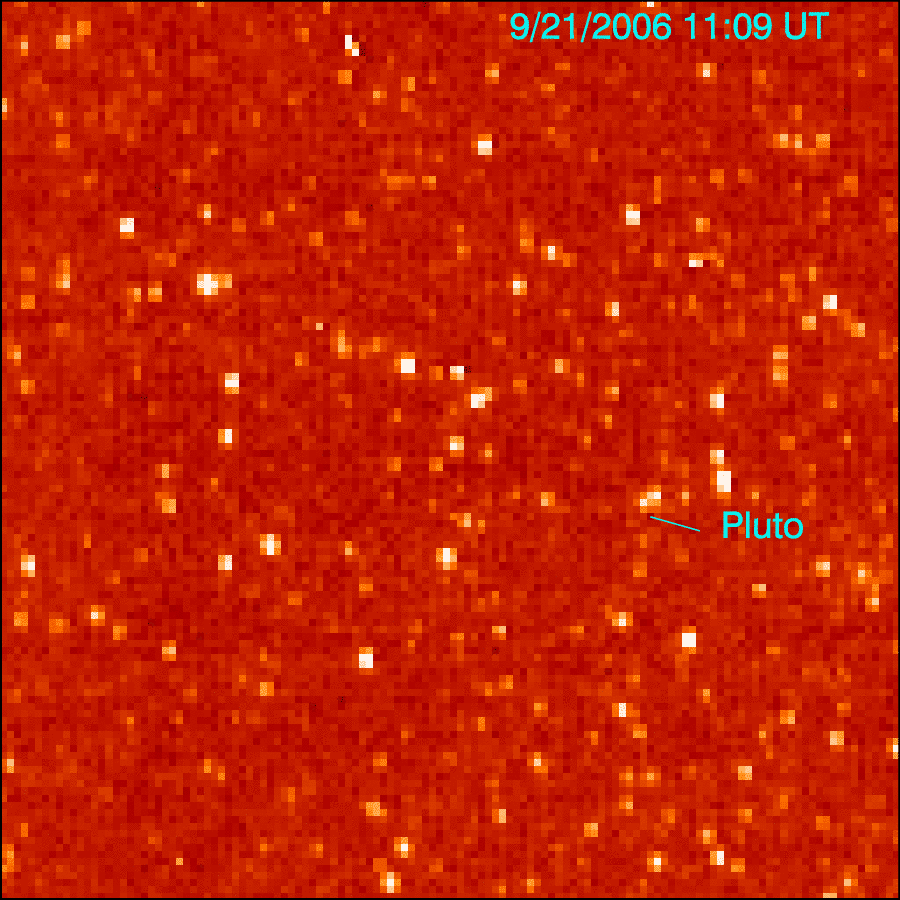
The New Horizons team has now enabled LORRI to take images with exposure times of 30 seconds. The longer exposure times have already dramatically improved the quality of their observations of their faintest Kuiper belt targets, and made it possible for them to observe even more targets in the future at fainter magnitudes. Before, the dimmest objects they could reliably detect were at about a visual magnitude of 20, but the longer exposure pushes that down to 21. Also, because it's common to improve observation quality by taking multiple photos and stacking them, the longer exposures mean they don't have to take so many photos for a stack and can economize on bandwidth.
Bandwidth was and remains New Horizons' most stringent constraint. The farther they get from Earth, the weaker their signal, and the slower their downlink. Also, the Deep Space Network is going through some major maintenance work that limits the number of active stations at any one time. New Horizons is particularly affected right now by the Canberra 70-meter dish being offline for maintenance through at least February. (This maintenance period was specifically scheduled to take place after the end of the Cassini mission and before New Horizons encounter science begins.)
Mission operations manager Alice Bowman reported that the number of science observations of distant Kuiper belt objects they've been doing this fall has made achieving sufficient downlink time an occasional "struggle" but that they're currently in good shape with only 300 Megabits of data remaining on the solid-state recorders. They can't relay data while the spacecraft is hibernating, so they'll need to downlink that after they wake up in but before the MU69 flyby. To that end, New Horizons next wakes up on June 4 and will remain awake through the MU69 encounter and for at least another year after, until 2020.
Earth observations
To prepare for the encounter, astronomers on Earth have been taking observations of MU69 as much as possible. There are two main purposes for performing observations before New Horizons gets there. One is to improve the precision of predictions of its future path, which will make it easier to target New Horizons' observations. The other is to learn what we can about the characteristics of the object -- its size, shape, and brightness.
There are two main Earth-based observational efforts. One employs Hubble, the only telescope reliably able to observe MU69 from Earth. (Other huge ground-based telescopes can, in principle, detect light from MU69, but only under absolutely perfect observing conditions.) Astronomer Marc Buie gave an update on the Hubble time that he's been allocated this year to support the mission: five opportunities, in March, May, July, August, and October. Buie told me in an email that "This work is actually a close collaborative effort with the Gaia mission and its science team. They are providing advance information from their upcoming DR2 (data release 2) catalog that we use to precisely calibrate the HST data. Without that support we would have much less precise knowledge of where 2014MU69 will be at the time of encounter. I can't thank them enough for their contributions." Buie said that while the Hubble observations are primarily for astrometry (position measurement), they'll also be doing photometry (brightness measurement).
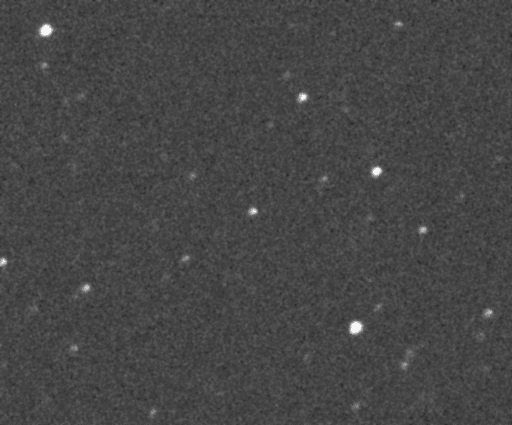
The other observational effort takes advantage of occultations of background stars by MU69 to measure its size and shape, as described for us in this article by Alejandro Soto last year. (Like the Hubble work, precision of the occultation observations now depends on Gaia data.) Astronomers have deployed across the southern hemisphere twice, on June 3 and July 17, 2017, to watch MU69 pass behind a star. The SOFIA airborne telescope watched another occultation, on July 10.
The June 3 occultation effort failed to detect any occultations; they learned later that they'd positioned themselves slightly too far to the north. The SOFIA observation yielded a single blip in the occultation lightcurve. The July 17 occultation produced the discovery that MU69 was irregular-shaped (like Eros), a contact binary (more like Churyumov-Gerasimenko), or even maybe a close binary pair that just happened to be undergoing a mutual event (like Pluto and Charon, only closer). And as far as the team could tell, the SOFIA observation didn't overlap the July 17 observations, which suggested that SOFIA had not observed MU69 but rather a previously undetected moonlet of MU69. The team mentioned the possibility of a moon for MU69 during a media workshop at AGU.
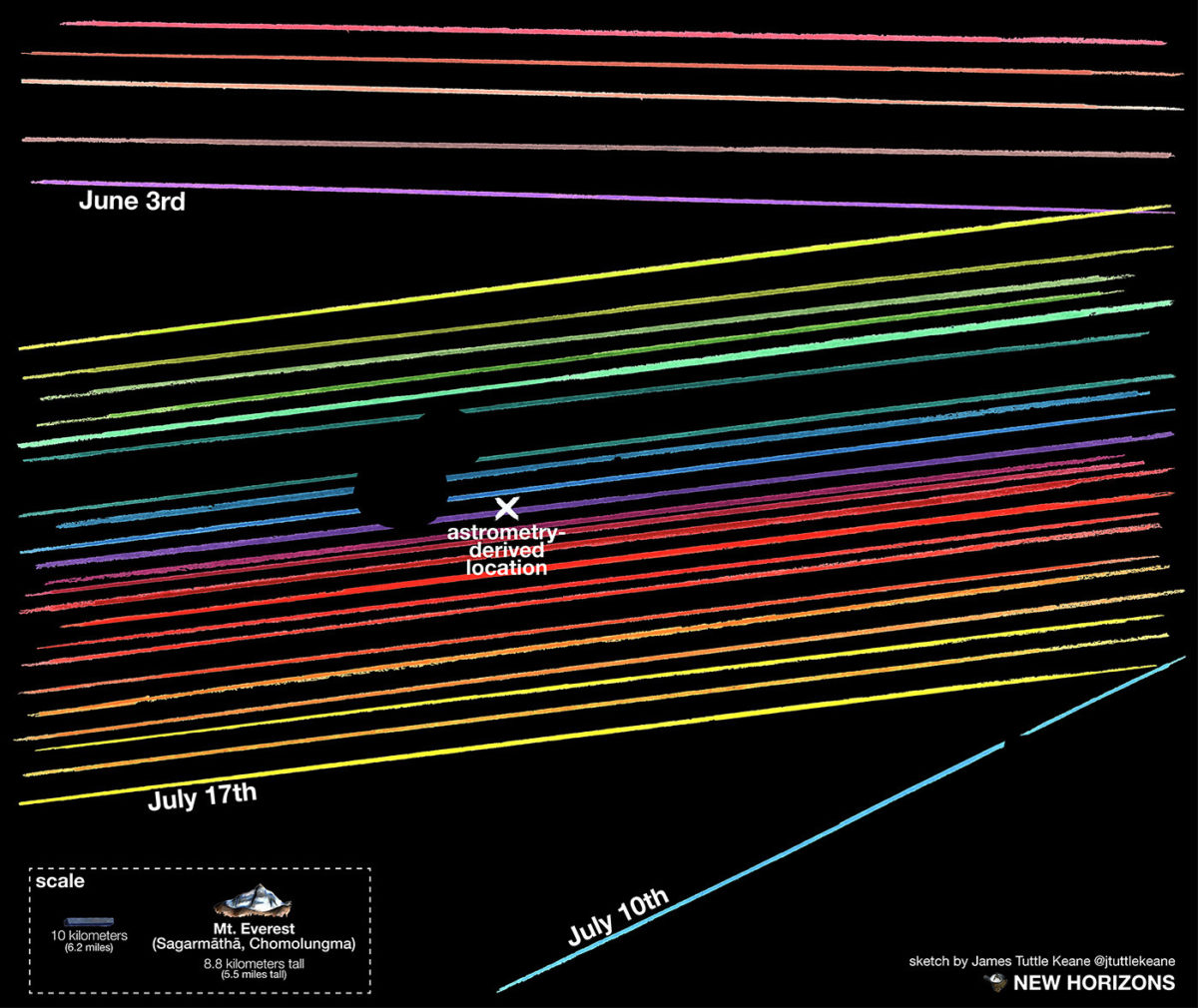
Unfortunately for those of us who enjoy multiple-object systems, it now looks less likely that the SOFIA blip was a moon, and it's `Oumuamua that revealed the truth (well, sort of). The story is one of scientific serendipity. When news of `Oumuamua hit the astronomy community, Marc Buie said he was drafted into the worldwide effort to shoot the interstellar asteroid with Hubble and to perform astrometry. Buie used the same software to process Hubble images of `Oumuamua that he was using for MU69 astrometry to determine `Oumuamua's position. But because `Oumuamua was moving so fast and so much closer to Earth, the parallax from observation to observation was much higher. The higher parallax between observations revealed a couple of subtle bugs in Buie's software ("one of them a case of me failing to read my own documentation, another one a sign error," he said). Having fixed those bugs and also taking advantage of a new, cleaner data product that the Space Telescope Science Institute recently began to provide for Hubble WFC3 images, Buie reanalyzed last summer's occultation data. The reanalysis very, very slightly shifted the positions of the three sets of observations with respect to each other, moving the July 10 and July 17 observations much closer to each other. Consequently, the evidence for a possible moon at MU69 has evaporated. The SOFIA blip is now consistent with a bare nick of an occultation of the MU69 primary detected during the July 17 occultation, and all the occultation data lines up better with astrometric predictions.
There is one more good MU69 occultation opportunity this year, on August 4, and the team should now be able to produce ridiculously specific predictions for where best on Earth to observe it.
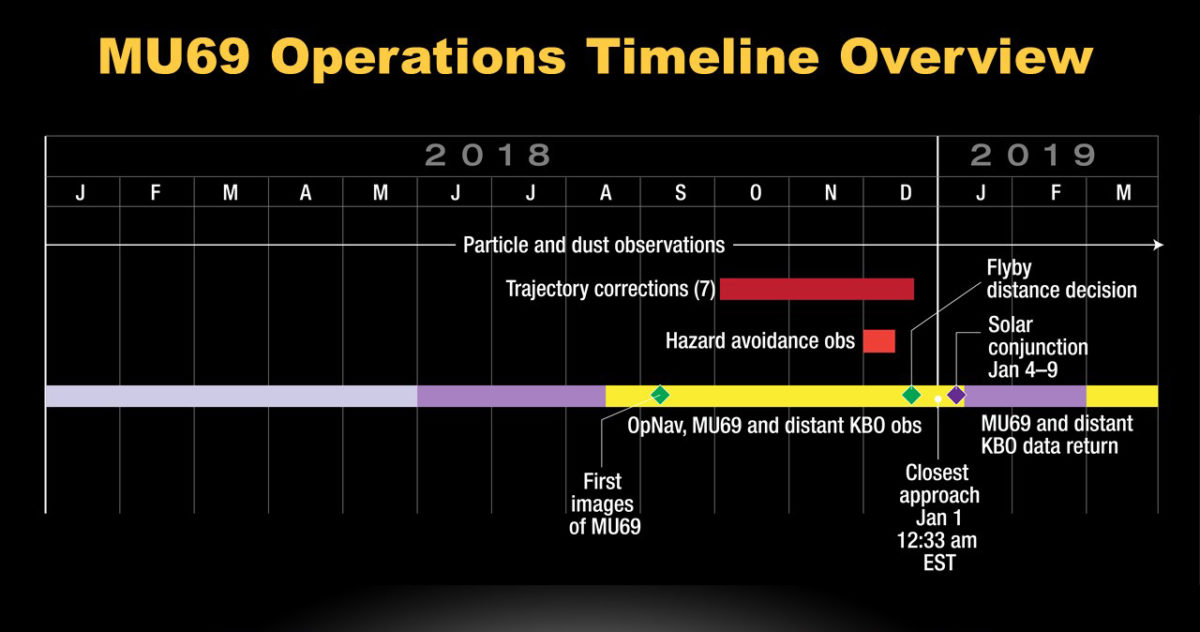
New Horizons' timeline for 2018...
The spacecraft wakes up June 4. For two days after, the spacecraft will be awake but keep thrusters quiet, as it broadcasts a signal to Earth for tracking purposes. High-resolution spacecraft tracking will tell navigators how the radiation from its nuclear power source has affected its trajectory, information that gets plugged back in to navigation predictions to improve accuracy. During the following two days, they'll uplink, verify, and engage the spacecraft's next command sequence. Then they'll get back to cruise operations, focusing on downlink. The spacecraft will still be spinning, which allows them to use both transmitters to downlink data (as I explained in this blog post).
On August 13, New Horizons will switch to 3-axis-stabilized mode, which is slightly more expensive in terms of fuel and reduces downlink speed, but allows the spacecraft to point to collect optical data and perform rocket maneuvers, among other things. They'll stay in 3-axis mode until after the flyby, returning to spin mode on January 9 to begin dumping data.
"Approach Phase" begins on August 16 and runs through December 24, from 138 to 7 days before encounter. The main goals of approach phase will be optical navigation (measuring MU69's position against background stars), searching for hazards, measuring MU69's lightcurve to determine its rotation rate, searching for satellites, and continuing distant observations of other Kuiper belt objects. The first attempt to image MU69 will be around August 21, but the dot will probably not be visible to LORRI yet. If it is visible, it will only be because of the new 30-second exposure capability. But principal investigator Alan Stern cautioned people to keep expectations extremely low for this attempted observation.
The optical navigation campaign begins in earnest in mid-September. They will perform long-exposure images to look for the dim target and watch it move against background stars. They should begin to spot it in September but for most of the approach its position will not seem to change much with respect to background stars because they're flying almost directly toward it. The navigation team will have to work very quickly to determine whether MU69's detected position requires an update to New Horizons' trajectory to get it closer to the one that was planned. There are four planned opportunities for trajectory corrections intended to fine-tune the path past MU69 (3 October with a backup on 23 October, and 20 November with a backup on 2 December).
Then there is a final set of maneuver opportunities designed to pick the flyby altitude for the encounter. As at Pluto, part of the approach observation effort will be to search for possible hazards -- dust rings and moons too small to spot from Earth. The New Horizons team is carrying forward two possible sequences for the couple of days around the encounter. The main difference between the two is a different encounter altitude: 3500 or 10,000 kilometers. With the closer flyby altitude, they can achieve better-resolution observations. But if a hazard or even a potential hazard exists that would reduce the predicted likelihood of New Horizons' survival of the flyby to under 99%, they will use a final maneuver opportunity to shift the trajectory to the more distant one. Unlike at Pluto, the science return from the more distant flyby is very nearly as good as the closer one, because 10,000 kilometers is still quite close.
(I have a lot more stuff on dust hazards at MU69, but I'll save those for a future post because this is already getting too long! If I haven't posted about "sunflower orbits" by the time they start taking optical navigation photos in September, ask me about them!)
The "Core" phase begins a week before encounter and runs until 2 days after. On approach, New Horizons will be taking and downlinking optical navigation images right down to the last couple of days before encounter. Nearly all the science data from MU69 will be taken in the 48 hours around closest approach, in a phase they're calling "Inner Core."
Here's a nice summary table that John Spencer used to illustrate the kind of data quality that we can expect from the MU69 flyby. Not shabby!
| Prime (as designed) | Alternate (as designed) | Pluto, for comparison | |
|---|---|---|---|
| LORRI pan Imaging (lower SNR) | 34 m/pix | 65 m/pix | 80 m/pix |
| MVIC pan Imaging (higher SNR) | 140 m/pix | 262 m/pix | 320 m/pix |
| MVIC color imaging | 320 m/pix | 506 m/pix | 700 m/pix |
| Stereo imaging | 80 m/pix | 126 m/pix | 470 m/pix |
| LEISA NIR spectroscopy | 1.8 km/pix | 2.8 km/pix | 2.8 km/pix |
| Alice airglow | Yes | Yes | Yes |
| Alice solar occultation/appulse | Yes | Yes | Yes |
| REX Gravity | No | No | Yes |
| REX daytime radiometry | Yes | No | Yes |
| REX nghttime radiometry | Yes | Yes | Yes |
| SWAP, PEPSSI, SDC in-situ | Yes | Yes | Yes |
...and 2019 and beyond
When will we get to see all that juicy data? As with the Pluto flyby, it'll take a year or so to get all the data down, but they have planned early downlinks of some of the best stuff. Two "failsafe" downlinks before closest approach will send some of the best pre-encounter content to Earth just in case New Horizons does have an unlucky meeting with a little bit of space gravel as it flies past. A successful "phone home" four hours after the flyby will inform Earth that no such meeting happened. And three early downlinks planned for January 1 and 2 will contain all the science highlights, hopefully.
Almost as soon as the encounter and earliest downlinks are over, New Horizons will go into solar conjunction from January 4 to 7. I asked Alice Bowman what implications that has for the mission, and she replied: "During solar conjunction, the downlink data rates are lower because of interference from the Sun. Generally, because New Horizons has fairly short solar conjunctions, we can stand down from science data playback (as the chances of dropping data is increased); we also make sure not to conduct any critical uplinks or sequence transitions, and we set the spacecraft’s command loss timer to allow it more time to receive commands."
Most of 2019 will be focused on spinning downlink. There will also be two periods of three-axis mode for distant observations of Kuiper belt targets. Beyond that, Kuiper belt observations will continue to alternate with hibernation periods until April 30, 2021, the end of the Kuiper extended mission.
After that, what next? One possibility is a further mission extension, during which they could potentially cooperate with the Voyager team to perform heliospheric observations. They began to lay the groundwork for such a mission extension at a collaborative meeting between the two science teams on January 16, the day before the New Horizons meeting. The conclusion of the workshop as reported to the rest of the team by Ralph McNutt: the placement of two Voyagers and one New Horizons at similar solar longitude but different latitudes and distances was not planned, and taking advantage of the coincidence would provide worthwhile science. Working together should enable new discoveries, making more from the two missions than their individual contributions. The instrument packages of the two missions complement each other. For example, New Horizons' ultraviolet spectrometer can detect lyman-alpha emissions from interplanetary hydrogen, while the Voyagers' ultraviolet instruments have been turned off for years. The Voyagers, by contrast, have working magnetometers, while the comparatively diminutive New Horizons was never planned to have one.
The Voyagers should still be able to run for at least another 5 years. Beyond that, power will be critically low. McNutt said that their goal was to try to keep the lights on until 2027, the 50th anniversary of the launch. "A bit dicey," he characterized it, but not inconceivable. New Horizons' power is also diminishing with time. Like the Voyagers and Curiosity, New Horizons is powered by the decay of a limited number of plutonium atoms in a radioisotope thermoelectric generator (RTG). As the plutonium decays, the total output of the power source also decays. You'd think the decline would be logarithmic (that is -- the more time has elapsed, the slower the rate of decay) because the decay of plutonium is logarithmic. But decay of an RTG is actually closer to linear, because the slowing of the decay of the plutonium is balanced by the speeding of the decay of the performance of the aging thermocouples in the power supply. So the output of New Horizons' RTG decreases by about 3.5 watts per year. It's currently at about 193 watts, will be at about 190 at the time of the MU69 flyby, and will be down to 150 by 2032, when the spacecraft will be 82 astronomical units away. 150 watts is supposed to be the minimum for spacecraft operation, but mission systems engineer Chris Hersman said that with some ingenuity they should be able to keep it running considerably farther than 82 AU. It will definitely not still be operable by 120 AU. The end will be somewhere in between 80 and 120, but he can't predict where yet.
Don't expect much news about New Horizons as it slumbers between now and wakeup in June. But there's plenty of action behind the scenes, as the science team prepares for the encounter, publishes papers about the Pluto system, drafts papers about Kuiper belt science, and continues delivering data to NASA's Planetary Data System. The first data release from science beyond Pluto is due out from the mission this summer. Tune in in June for extreme detail on MU69 encounter plans!
Let’s Go Beyond The Horizon
Every success in space exploration is the result of the community of space enthusiasts, like you, who believe it is important. You can help usher in the next great era of space exploration with your gift today.
Donate Today

 Explore Worlds
Explore Worlds Find Life
Find Life Defend Earth
Defend Earth

